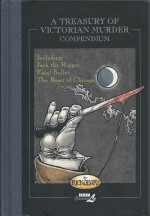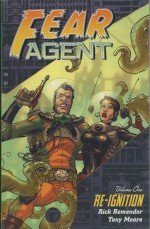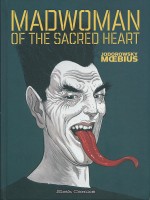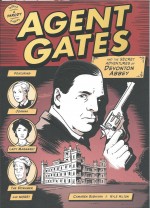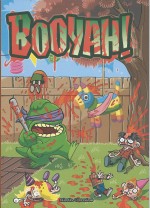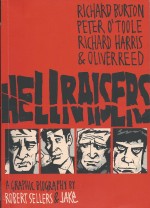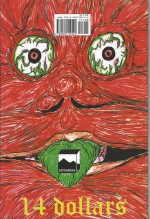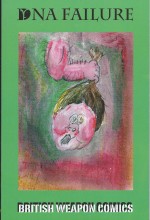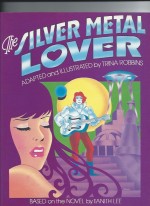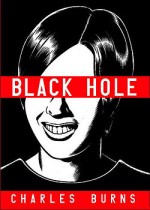

By Étienne Davodeau, translated by Joe Johnson (NBM/Comics Lit)
ISBN: 978-1-56163-703-4
Throughout 2010 Bande Dessinée author/artist Étienne Davodeau (Friends of Saltiel, Lulu femme Nue, Un monde si tranquille, The Poor People: A History of Activists), noted for both brilliant fiction and moving factual comicbook novels, participated in a fascinating life (or perhaps vocation) swap experiment.
The artist, writer and designer was born in 1965 and, whilst studying art at the University of Rennes, founded Psurde Studios with fellow comics creators Jean-Luc Simon and Marc Le Grand, AKA “Joubâ€. His first album The Man Who Did Not Like Trees was released in 1992 and he forms an integral part of the modern graphic auteur movement in French and Belgian comics.
Released as Les Ignorants in October 2011, this lyrical and beguiling cartoon documentary reveals the year when the artist and independent specialist wine-maker Richard Leroy shared the secrets and mundane realities of each other’s insular, introspective and fearsomely philosophical solitary professions.
Davodeau knew absolutely nothing of the ferocious demands of the elite, experimental grape-growing game nor the oenophilic secrets and mysteries of tasting wine, but similarly the bluff, irascible son of the soil had barely read a comic in his entire life. The journal of discovery opens with ‘To Pruning, Then (Plus One Belgian Printing)’ as the artist is put to work in icy winds on the terroir of Montbenault, cutting and shaping the lianas which hold such glorious potential. Then Leroy is taken on an eye-opening tour of a Belgian print-works where Davodeau is summoned to sign off his latest album…
In ‘Wood’ a trip to a cooperage dissects the role of barrels in the slow fermentation process, as the new friends discuss the imponderables of judgement. It’s hard to define, but in their own fields each knows right and wrong, good and bad and most especially “not perfect yetâ€â€¦
Leroy’s extra-curricular work includes reading lots of comics and graphic novels, as well as being introduced to the peripheral joys such as signings, collectors fads and so forth, but when he is introduced to major creator Gibrat a fascinating discourse on the aesthetics of the medium ensues in ‘Jean-Pierre (and Jimi, and Wolfgang Amadeus and a Few Others)’, liberally lubricated by the vintner’s ever-present samples of his own form of creative expression…
A charming interview and guest appearance with Lewis Trondheim graces ‘The Art of the Portrait and its Vicissitudes, or “The Theory of the Beak‒ even as the spring brings terror, confusion and greater back-breaking toil as the artist has his first brush with tractors and even more obscure specialist technologies, ‘What Goes Without Saying’ offers personal history and raking in the hot sun, after which ‘In Praise of Manure’ focuses on subjectivity as he learns the pros and cons of the controversial vintners’ heresy of “Biodynamicsâ€â€¦
Ploughing and accidental self-immolation features in ‘A Question of Proximity’, whilst the arrival of the world’s most influential wine critic opens a whole new area of discourse in ‘New York/Montbenault/New York’, and the tables are satisfactorily turned in ‘Saying Something Stupid: (Sometimes) a Good Idea’ as Richard attends an editors’ meeting in Paris in July before a little break at a Bistro reveals the true depth of the naïve comic-consuming artisan’s liquid gifts…
Wine-making is a 24/7 occupation and as storm season hits the terroir ‘The Blunder’ offers moments of genuine tension and apprehension for this year’s crop before a successful “disbudding†of the vines leaves time for a taste-training session for the novice drinker and reluctant reader alike.
In ‘Blacks and Whites’ the never-shy Leroy meets a creator whose work deeply affected him, and the pleasant hours spent with author/artist Marc-Antoine Mathieu lead to deep thoughts all round before ‘Wherein, When Certain Vintners Suffer Sulphur’ covers the raging debate in the wine industry on the use of elemental additives to “manage†fermentation, which leads inevitably to the frantic camaraderie of the grape-picking and constant cry for another ‘Bucket!’
October, and with the year’s harvest pressed and in barrels there’re a few quiet moments to disparage foolish ‘Label Drinkers’ at Wine Exhibitions, happily contrasting the snobs with Leroy’s first experience of a Comics Festival, before November brings the first tentative tastings of the new vintage and a long-awaited epiphany moment for reluctant reader Leroy in ‘Montbenault/Paris/Kabul’…
The Photographer (“Into War-Torn Afghanistan with Doctors Without Bordersâ€, by Emmanuel Guibert, Didier Lefèvre and Frédéric Lemercier ) was the book the vintner responded to on a purely, frighteningly visceral level, so Davodeau takes the bemused convert to meet the lead creator and consequently discovers a tenuous connection between his life-swap partner and the documentary graphic novel’s subjects…
In ‘A Teetering Statue’ the quiet winter weeks allow breathing space to learn the travails of shipping and export, as well as encompassing a visit to the Paris Cartier Foundation’s Moebius Exhibition and some deliciously piquant home truths for comics cognoscenti before returning again to pruning vines, whilst ‘Savagnins, Poulsards, and Company’ takes us almost full circle as Leroy takes the artist to the vintner’s own personal promised land and a fellow elite wine maverick, whilst a trip to Corsica takes in the Bastia Comics Convention and the unique vineyard of the “Patrimonio Arena†in ‘Nielluccio, Vermentinu, Bianco Gentile and Oubapo’…
The magnificently elegiac and languorously evocative account wraps up in genteelly seductive manner with one final excursion as The Initiates head for the Dordogne to follow up on Emmanuel Guibert’s introduction to the survivors of The Photographer. One last gracious day of cross-fertilised booze and books conversation in ‘Final Revelations under a Cherry Tree‘ then leads inevitably back to where and how it all began for both participants…
Of course all I care about is comics, but even on my terms this rapturous, studious yet impossibly addictive account of two open-minded, deeply dedicated artists’ tentative exploration of each other worlds – at once tediously familiar and utterly unknown – is a masterpiece of subtle education, if not benevolent propaganda and, like good wine or a great book, takes its own sweet time to hook you.
Also included in this surprisingly compelling hardback chronicle is ‘Drunk/Read’ – a list of wines and graphic novels introduced to each novitiate; an intriguing bucket list for readers to aspire to and complete our second hand education into the greatest arts on Earth…
This dazzling display of harsh fact and the theosophical fervour of the grape-growers art, seamlessly blended with an outsider’s overview of our whacky, cosy world of cartoons and funnybooks, is enchanting beyond measure and should figure high on any fan’s list of books to seduce comics non-believers with. It might also be the perfect gift for all those people you thought you couldn’t buy a graphic novel present for…
Europeans excel at making superb comics which simultaneously entertain and educate (check out the sublime On the Odd Hours or The Sky over the Louvre to see what I mean) and the seductive, evocative, eclectically human monochrome illustration and dialogue perfectly capture the sensorial effect of wine and work and weather, and the backbreaking, self-inflicted artisan toil and ineffable rewards of making comics or creating wine…
Every so often a book jumps our self-imposed ghetto wall of power fantasies and rampaging adventurism, and I pray this elegiac documentary of a bizarrely fitting experiment makes that sort of splash in the wider world.
© Futuropolis 2011. © 2013 NBM for English translation.

